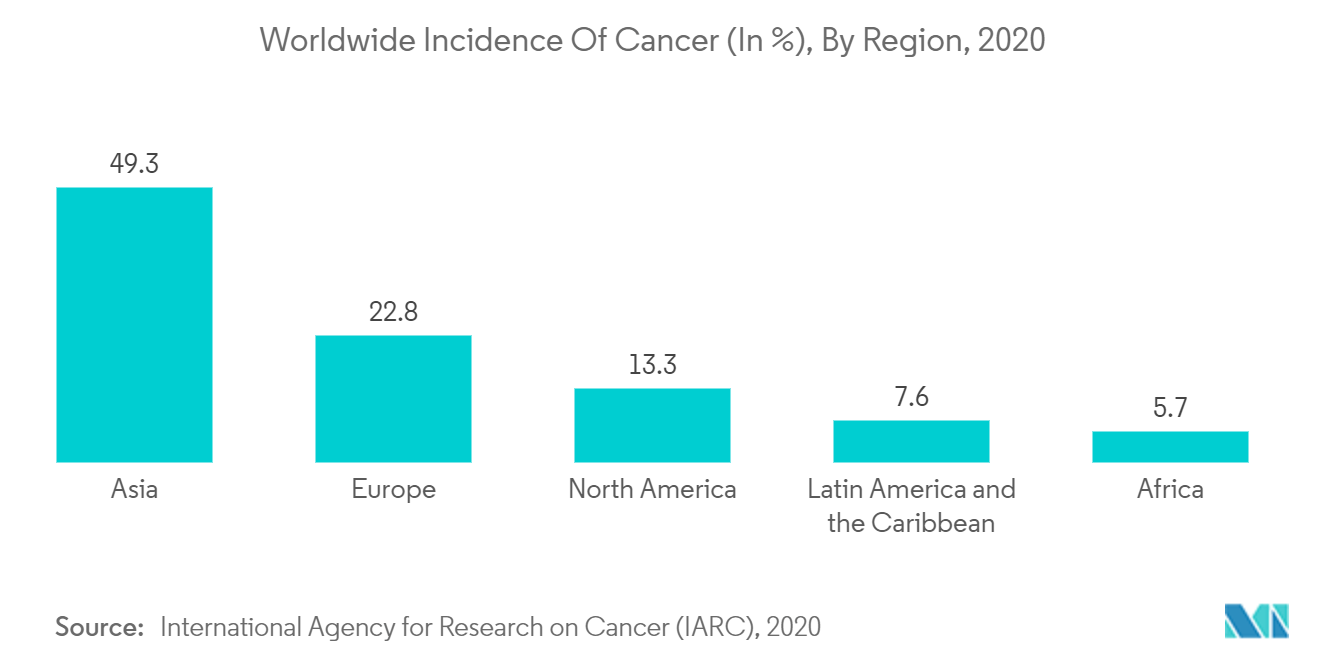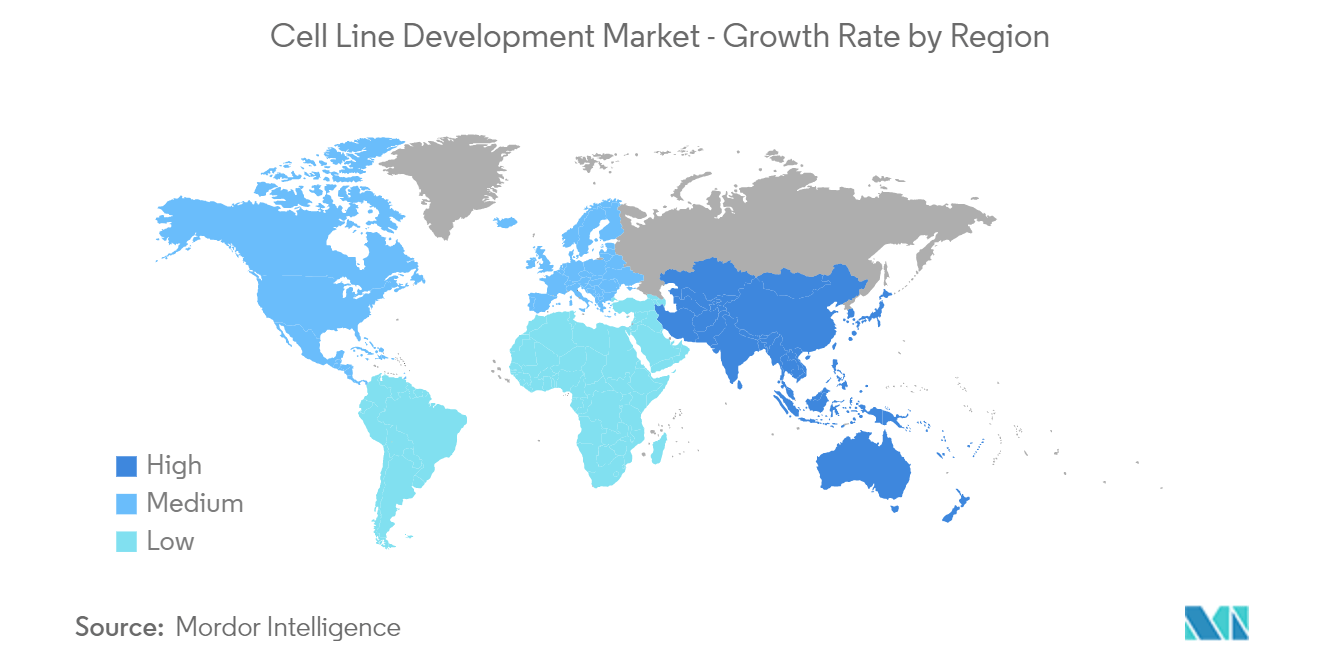Market Trends of Global Cell Line Development Industry
This section covers the major market trends shaping the Cell Line Development Market according to our research experts:
Mammalian Cell Line Development is Expected to Register Rapid Growth Over the Forecast Period
The mammalian cell line development segment is anticipated to experience profitable growth in the future. This is because more mammalian cell sources are being used to create monoclonal antibodies. These cell lines produce intricate proteins that are reminiscent of those in the human body, aiding in the creation of customized medications. Additionally, human tissues and other biological components can easily adapt to mammalian cell lines, lowering the risk of infection. It is anticipated that these benefits of mammalian cell lines will increase the demand for cell line development. According to the study titled "Methods for transient expression and purification of monoclonal antibodies in mammalian cells" published in the Advances in Protein Molecular and Structural Biology Methods in March 2022, the production of human antibodies in animals (mouse or rabbits) from polyclonal to Monoclonal antibodies (mAbs), from murine to chimeric antibody, and finally modified to fully humanized mAbs, serves as a desirable therapeutic tool for clinical research and academic study. Thus, increased development of the mammalian cell line to create the monoclonal antibodies which are used in the treatment of various chronic diseases expected to boost the growth of the segment.
According to the Pharma Manufacturing Updates in July 2021, nearly 20 medications, including a few blockbusters like Novartis' Entresto and Biogen's Spinraza, are expected to have their patents expire in 2023. In addition, the expiration of branded drugs has given rise to the emergence of biosimilars. As a result, there has been a growing demand for cell line development. Most of the biopharmaceutical companies that develop mammalian cell lines are based on either the methotrexate (MTX) amplification technology or the glutamine synthetase (GS) system.
With the utilization of mammalian cell lines, the cell clones obtained are highly heterogeneous and large numbers of cell clones have to be screened to identify rare stable high producer cell clones. To make the screening process easier, there have been several advances done in mammalian cell line development, which has been making it the more preferred source for cell line development. For Instance, in May 2022, ProteoGenix, a contract research organization specializing in biologics discovery and bioproduction launched its XtenCHO Transient Expression System. Due to its enhanced plasmid stability and optimized metabolism, the new proprietary mammalian cell-based expression host achieves up to ten times higher yields with less hands-on time compared to existing solutions. The new CHO host aims to simplify recombinant protein production and accelerateearly-phasee drug screening
Therefore, with the advancements being done in mammalian cell lines, the segment is expected to witness healthy growth in the future.

United States Dominates the Market
North America dominates the cell line development market over the forecast period. The United States has a better healthcare infrastructure, compared to most developed countries. The presence of key players in the United States is the major factor propelling the growth of the market studied in the country. Furthermore, support from the United States government to accelerate the research in the biotechnology and biopharmaceutical industry has been augmenting the demand for cell line development and technological advancements, and increased research and development spending has contributed to high regional growth.
The major factors driving the growth of the studied market in the region include the high incidence of chronic diseases, such as cancers, along with the increased investment in research and development activities by the major players. According to the American Cancer Society Facts and Figure 2021, the number of cancer deaths and new cases estimated for 2021 was 1.9 million new cancer cases diagnosed and 608,570 cancer deaths in the United States.
However, the growing development of biosimilars in the united states is expected to boost the market growth. For instance, in June 2020, Pfizer Inc. received the FDA approval for its pegfilgrastim biosimilar, Nyvepria, indicated for use in lowering the incidence of infection. Thus, in view of the high incidence of chronic diseases, such as cancers, and increasing research and development (R&D) activities, the market is expected to propel significantly over the forecast period in North America.
Furthermore, growing launches by the technological advanced product for the cell line development is expected to boost the market growth. For Instance, in October 2021, A new platform for completely automated stable cell line development has been introduced by CYTENA, a BICO company. The platform combines CYTENA's best-in-class liquid handling expertise with its already successful single cell dispensing technology to enable cost-effective and superior laboratory automation. The democratisation of access to the production of next-generation healthcare solutions, such as antibody therapies, gene therapies, and biosimilar production, furthers BICO's Bio Convergence agenda.
Thus, in view of the high incidence of chronic diseases, such as cancers, and increasing R&D activities, the market is expected to propel significantly over the forecast period in North America.

